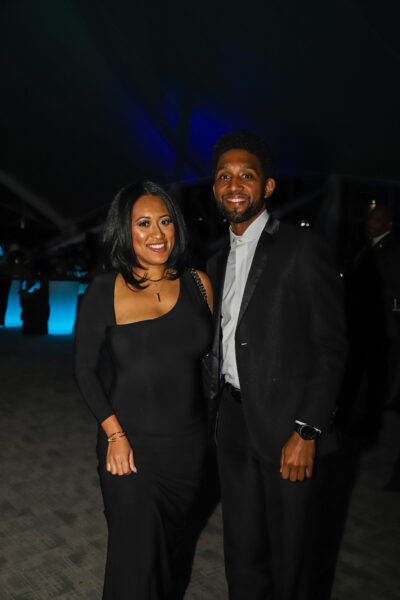After a weekend of pizza, coffee, energy drinks and those mixed nut packages with the talking peanut commercials, one would think an audio-visual hookup between a MacBook Pro and a projector would work.
“Does anybody know how to tap dance?” said one presenter shortly after 1 p.m. Sunday, the final day of the Art Bytes hackathon at the Walters Art Museum, to fill the void of some awkward presentation time. Another audio-visual cord was eventually procured, and the afternoon continued as planned.
More than 50 people and six judges had gathered in the museum’s Graham Auditorium to listen to eight teams present their ideas for employing technology to make the Walters more accessible and relevant in a digital world. Among the judges were Jeannie Howe, the executive director of the Greater Baltimore Cultural Alliance, Betamore cofounder Greg Cangialosi, and Sid Meier, director of creative development at Firaxis and one of the creators of the early-nineties video game Civilization.
Each presenting team was allowed three minutes to demo their creations, followed by three minutes of questions from the judges. (See below for a list of the teams and their respective apps.)
The judges were given full discretion to divvy up the $5,000 in prize money. They gave top prizes of $1,000 to Frame and Tanzaku, both of which were smart phone apps created by two-person teams of developer and designer. The other six teams were each awarded $500.
“This is the way it should be. It feels right,” Director of the Walters Gary Vikan told me Saturday afternoon, as groups of people gathered around circular tables in Statuary Hall. “I’m a Ph.D. in medieval art and history. I don’t feel stupid. I don’t feel we’ve … thrown anything away. Look at all the smart people in here, working like dogs.”
Vikan says that Art Bytes is vital to the museum because “technology is changing how we think.” As a “subunit” in the collective thought processes of society, Vikan says the museum is “only as good as we add value to real people.”
He credits the Internet, and the ease with which new digital tools have enabled people to access information, as a democratizing force that inspires “collective creation of talent.” Or, in other words, to stay relevant over the next decade—and even further—the Walters must change with the times, instead of trying to maintain its status as a gatekeeper to culture and knowledge.
“We are here for the benefit of the public,” says Vikan. “Not for the benefit of the director.”
Art Bytes team names and their creations:
Time Machine: This team developed an app by which visitors to the museum could use their mobile phones to take photos of the artwork, and then, thanks to augmented reality technology, view an overlay of how the photographed artwork looked at its time of creation. The same could be done for texts, translations and audio and video files and the app is capable of creating animations and three-dimensional renderings of photos taken.
Pez-Head: Dave Troy, and son, Thomas, were two members of this team, which used a $1,749 MakerBot to create three-dimensional prints of the artwork in the Walters. The 3D artwork was composed of ABS plastic—the stuff Legos are made of—and prints took generally 25 minutes to make. As one team member said, this is technology that brings tactility to people’s conceptions of artwork, something that could be potentially beneficial to blind people.
http://www.youtube.com/v/bwUq7td4au0?version=3&hl=en_US
Schroddon: Creators of an iPhone and iPad app that maps every level of the Walters museum and utilizes QR codes associated with each piece of artwork that, once scanned, takes a user to a mobile-friendly version of the artwork description already provided on the Walters existing website. Built into the app are buttons for Facebook, Twitter and e-mail sharing so users can tell friends where they are and what they’re viewing in the museum.
Dave Raynes: Raynes, a developer with Canton-based 410 Labs, took the artwork information already on the Walters existing website and converted it into an application programming interface organized by tags, locations and tag relationships in order to make the images online easier to browse through.
Badgify the Walters: Using a smart phone, students use this app to scan art and play associated games—taking short quizzes, for instance—while walking through the museum. Students earn points and win badges, which they earn if they answer questions correctly.
http://www.youtube.com/v/XDy3FLkThVM?version=3&hl=en_US&rel=0
The WalTours: A way-finding, mobile-friendly website people can use to navigate their way around the Walters. Using Google Floorplans, the museum’s inventory of artwork is paired with geo-points inside the museum. At each point—each piece of art—users can leave comments and share on Facebook and Twitter.
Frame: A web app optimized for mobile phones, Frame is for use inside the museum. While not quite a way-finding app, Frame provides additional context to the artwork people see in the Walters. The levels of the Walters are separated and searchable on the app, as are each of the specific rooms of art on each floor. Upon clicking inside a specific room—say, art from the 18th century—Frame launches a curated list of events, inventions, people and milestones associated with the time period that are each hyperlinks to Wikipedia pages. (For the 18th century, for instance, Frame provides links to the opera The Magic Flute, Jonathan Swift’s Gulliver’s Travels, Betsy Ross, the American Revolution, Voltaire’s Candide, and the invention of the Spinning Jenny.)
Tanzaku: In Japan, there is a tradition of writing thoughts and messages on slips of paper called tanzaku. This web-optimized mobile app organizes all the artwork inside the Walters chronologically. Upon clicking on the name of a piece of art, users are shown a corresponding high-resolution photo. Underneath the photos, visitors to the museum can leave their own virtual notes inside the app. Tanzaku was built using Raynes’ API, which means the app automatically updates itself whenever changes are made on the Walters’ existing website.
Join the conversation!
Find news, events, jobs and people who share your interests on Technical.ly's open community Slack

Baltimore daily roundup: B-360's policy moves; a foundation's fight for financial inclusion; Digital Navigator training

Baltimore daily roundup: Johns Hopkins dedicates The Pava Center; Q1's VC outlook; Cal Ripken inaugurates youth STEM center

Baltimore daily roundup: Scenes from an epic Sneaker Ball; Backpack Healthcare in Google AI accelerator; local tech figures' podcast



